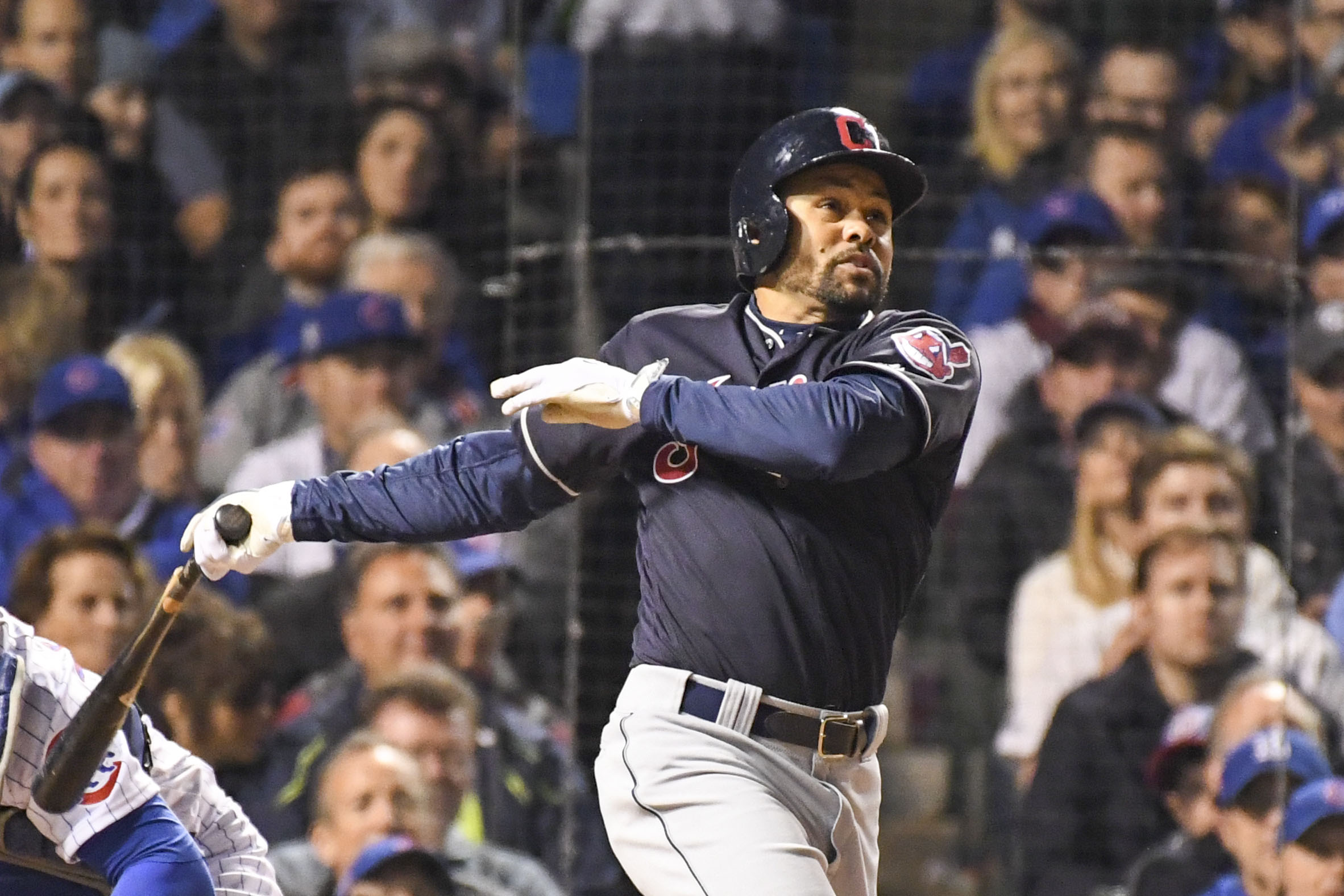This recap, written by Baseball Prospectus’s Jarrett Seidler, forms part of the main site’s comprehensive coverage of the postseason, “Playoff Prospectus”.
Cleveland acquired Coco Crisp on August 31 in a trade so low profile that the phrase “under the radar” might be charitable. Going back to Oakland was Colt Hynes, a 31-year-old minor-league reliever whom Cleveland had purchased for cash considerations just a few weeks earlier. Oakland used Hynes to bolster the playoff roster of Triple-A Nashville, while Crisp was brought in to Cleveland as a candidate to take the roster spot of reserve outfielder Abraham Almonte, ineligible to participate in the playoffs due to a spring PED suspension.
In the top of the seventh inning on Friday night, Terry Francona called on Crisp to pinch-hit for Cleveland’s far more notable midseason trade acquisition, ALCS MVP and human strikeout machine Andrew Miller, in one of the highest-leverage situations of the season.
Crisp delivered the biggest hit of the season, propelling Cleveland to within two wins of capturing their first World Series since 1948.
****
I’m sure most of baseball has forgotten now, but 2016 was actually the second time Cleveland traded for Coco Crisp. One can go back and look at what then-BP transactions maven Christina Kahrl wrote about Cleveland picking up Crisp— who was then going by his given first name, Covelli—from the Cardinals as the player to be named later in the Chuck Finley trade. Yes, Coco Crisp has been around long enough that he was once dealt for a guy who fell off the Hall of Fame ballot in 2008.
At the time of the Finley deal in 2002, Crisp was a solid but not particularly outstanding outfield prospect. He would soon become Cleveland’s regular center fielder, establishing himself as a decent glove with some hitting ability. But a better option soon came along: stud prospect Grady Sizemore, soon to become stud young superstar Grady Sizemore. Crisp was shuffled into left field for a year and then dealt to Boston as the key piece to acquire top prospect Andy Marte.
The same basic pattern repeated itself for the Red Sox: Crisp was perfectly fine for a few years when healthy, developing a deserved reputation as a superlative defender, but got hurt a little more than you’d like. Crisp then got quickly shoved aside when Jacoby Ellsbury came along as a younger, better option. After an injury-prone season in Kansas City, Crisp signed with Oakland as a Billy Beane reclamation project.
Crisp wasn’t all that much better of a player during his 30s in Oakland than during his 20s elsewhere, aside from staying healthy a bit more. But unlike some of his prior teams, the A’s appreciated Crisp for what he was, an outstanding defender in center with enough bat to contribute a pretty good overall package. Crisp wasn’t quite a star in Oakland—he never made an All-Star team or even won a Gold Glove—but he was a very good player for the first half of this decade.
He missed most of 2015 while battling elbow and neck injuries, and faded into a platoon left fielder in 2016 while griping that the A’s were manipulating his playing time to avoid a 2017 vesting option. He waived his no-trade rights to go back to where it all started in Cleveland, reuniting him with his manager from Boston, Terry Francona.
To read the rest of the piece, please head on over to the main site.
Lead photo courtesy Tommy Gilligan—USA Today Sports.
